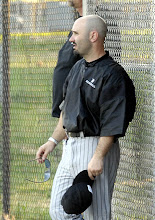This course has opened my eyes to not only the new literacies in education, but the way classroom units can be taught to students. New literacies can help students adjust to 21st century technology, because literacy is more than just reading and writing. Today, we need to engage students and get them excited with the curriculum teachers need to teach. Projects are fun, engaging, and create meaningful learning. If you focus on more of the 21st century new literacies, then students can learn through collaboration and conversation. Social sharing and teaching to create a product is an investment (Richardson, 2009). This is what students will need for survivial beyond education.
In this course I learned to take a unit and apply it students learning. It has given me a better understanding to keep students interested in curriculum, and allow me to assist and guide, rather than dominate the unit. Children want to get their hands dirty to learn, not just listen how to get their hands dirty. They have to learn through trial and error, better choices, and critical thinking while immersed in the rapid growth of computers. Technology and the ways of gathering information are now endless and unpredictable. I do believe teachers need to step it up, to prepare students in reaching their goals (Eagleton & Dobler, 2007). We need to teach skills for the future. Our goal is to teach students to learn and be resourceful. Students must be guided to make mistakes and make adjustments (Laureate, 2009). Teachers have to embrace the challenge that technology operates without containers.
In the past few years, I have been bridging my own gap to more teaching through student products. This year I will be going back to elementary school to teach fourth grade. I am interested in expanding in class products to collaboration outside the classroom. One area of study will be adaptations in science. I would like my students to reach out and take part with an outside resource like the Jane Goodall institute. Instead of using a textbook or other technology resources, her institute could provide students with more direct answers to questions that peek curiosity. Curiosity is a leading factor to drive student learning. They always want to know why, and these direct resources could provide a way for them to get authentic feedback in their learning.
Jay Raines
Eagleton, M. B., & Dobler, E. (2007). Reading the Web: Strategies for Internet inquiry. New York: The Guilford Press.
Laureate Education, Inc. (Executive Producer). (2009). Supporting Information Literacy and Online Inquiry in the Classroom. Baltimore: Author.
Richardson, W. (2009, March). Becoming Network-Wise. Educational Leadership, 66(6), 26–31.
http://www.janegoodall.org/
Friday, August 20, 2010
Subscribe to:
Post Comments (Atom)




No comments:
Post a Comment